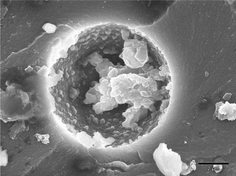Biocomposites can be designed and engineered from plant bio-fibres and a blend of unsaturated polyester resin and derivatized vegetable oil to replace existing glass fibre-polyester composites for use in housing applications. Natural fibre composites (biocomposites) would provide environmental gains, reduced energy consumption, lighter weight, insulation and sound absorption properties, thus providing many beneficial additions to the American Advanced Housing program. Biocomposites were made using a non-woven fibre mat (90% Hemp fibre with 10% thermoplastic polyester binder) as reinforcement, and unsaturated polyester (UPE) resin as well as blends of UPE and functionalized vegetable oils as the polymer matrix. All composites were made with 30% volume fraction of fibre, which was optimized earlier. The structure–property relationships of this system as well as the thermo-mechanical properties of these composites were measured. The notched Izod impact strength of biocomposites from biobased resin blends of UPE and functionalized vegetable oil and industrial hemp fibre mat are enhanced by 90% as compared to that of the pure UPE-industrial hemp fibre mat composites. The initial tests also show an improvement in the tensile properties of the composite as a result of the incorporation of the derivatized vegetable oil. The morphological changes of the matrix and composites have been analyzed using electron microscopy.

You have access to this article
 Please wait while we load your content...
Something went wrong. Try again?
Please wait while we load your content...
Something went wrong. Try again?


 Please wait while we load your content...
Please wait while we load your content...